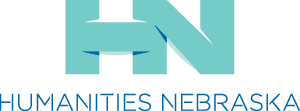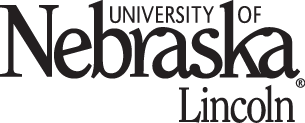They took away their dignity, their worldly goods, their freedom, but they could not take away their light. This presentation is dedicated in ever lasting memory of the millions who perished during the Holocaust.
Bea Karp, Child Holocaust SurvivorI remember we were woken up because there was so much noise out in the street. And I remember running to the windows wondering what was going on. And as I looked out, it was as though the whole city of Karlsruhe was burning.
Margot Roesberg, Holocaust SurvivorThat night there was a phone call. They warned us not to stay in the apartment there would be raids. We were scared to death, of course. [unclear]
Richard (Dick) Holland, NarratorIn late October 1938, Hitler expelled thousands of Jews who had lived in Germany for decades. On the night of October 28th, Zindel Grynszpan family was forced from their home by the German police, their possessions confiscated, and they were relocated near the Polish border. They had resided in Hanover for over a generation Berta Grynszpan, Zindel's daughter, wrote a postcard to her brother, Herschel, living in Paris. Listen.
Beth Dotan, NarratorYou undoubtedly heard of our great misfortune. On Thursday evening, rumors circulated that all Polish Jews had been expelled from the city, but we didn't believe it. On Thursday evening, a policeman came to us and informed us that we had to go to the police headquarters and bring along our passports. We were not told what it was all about, but we saw that everything was finished for us. Each of us had an extradition order pressed into his hand to leave Germany before Saturday, the 29th that didn't permit us to return home anymore. More regards and kisses from all of us. Berta.
Richard (Dick) Holland, NarratorUpon receiving his sister's letter and hearing of the upheaval of his family and other Jews, 17 year old Herschel purchased a gun. On November 7th, the teenager entered the German embassy in Paris, determined to avenge his countrymen. Grynszpan shot the German diplomat, Ernst vom Rath, who died two days later on November 9th, 1938. Vom Rath's assassination gave Joseph Goebbels, Hitler's propaganda minister, the excuse to act against the Jews. The result was an assault on Jewish communities throughout Germany and Austria. Violent pogroms on the night between November 9 - 10 that came to be known as Kristallnacht, the night of the broken glass. Gestapo headquarters in all of Germany occupied lands, received orders to carry out multiple acts of violence.
Bea Karp, Child Holocaust SurvivorWe found out that all the men that had gone into the streets had been rounded up and taken to concentration camps. All of the synagogues across Germany had been burned down. Not only the synagogues, they also went into Jewish stores and, uh, they looted those and broke the windows. They have broken the windows in the synagogues. As matter of fact, there was so much glass laying on the street and that's why it's called the night of the broken glass or crystal night.
Richard (Dick) Holland, NarratorThe Kristallnacht pogroms resulted in the killing of over 100 people and injuring of thousands. Close to 2000 synagogues were burned. Over 7,500 Jewish businesses were destroyed while countless cemeteries were desecrated and schools vandalized.
Bea Karp, Child Holocaust SurvivorMy father said to me, I better get dressed and see what religious articles I can save from the burning synagogue. And so he left us and, um, I still remember my mother waiting for him to come home that night. We really didn't know what was going on. I know my mother didn't know what was going on. Like I said, my dad never came home after that.
Margot Roesberg, Holocaust SurvivorWe never thought it would be a permanent separation. We were sure that after a year or two, we would get to America together, be together. So it was a temporary setting. So the families were really torn apart.
Richard (Dick) Holland, NarratorKristallnacht was a turning point in Nazi policy against the Jews. And mostly because the whole world knew about it and no one raised a voice of protest. Hitler had a green light. Now his war against the Jews began in earnest.
Joe Fishel, Holocaust SurvivorThe Nazis came in, the war broke out Friday morning, Nazis went in Saturday afternoon. And first thing, what they did was burn down the synagogue the Beyt Midrash. There were people in it and they didn't let the people out. They, they killed quite a few. There was...I don't know how many hundreds of people were in it, they didn't let people out because Jews lived around close there.
Richard (Dick) Holland, NarratorThe Holocaust was the systematic state sponsored persecution and murder of 6 million Jews by the Nazi regime and its collaborators. Hitler who had come to power in Germany in 1933, believed that Aryan Germans were racially superior. The Nazis deemed the Jews inferior and a threat to their nation. During this time, Nazis also targeted other groups considered to be racially inferior, including Roma or gypsies, the disabled, and some Slavic peoples. In addition, Communists, Socialists, Jehovah Witnesses, and homosexuals were considered a threat to the goal of a pure society. All over Europe, ghettos were created by the Germans and their collaborators, where Jews were moved to live in cramped and inhumane conditions.
Joe Fishel, Holocaust SurvivorThe ghetto formed in 1942 in Bedzin. I didn't come home, but I came home once on vacation and saw the ghetto. I came home and my mother was crying. I came home for two days and we had a three room apartment and they pushed down one little room and it was very hard, it was heartbreaking, but I couldn't do anything about it.
Fred Kader, Child Holocaust SurvivorTime came for us to be, uh, rounded up for the deportation I was a blond haired, blue eyed kid and I looked like a little Aryan, I guess. My mother thought that I had a half a chance maybe of surviving. She told me to walk out of the train station.
Bea Karp, Child Holocaust SurvivorWe were taken to a concentration camp in France, Gurs. And man and woman were separated and eventually we were separated from our mother. And, but we did see her and, um, we stayed there until they transferred us to another camp.
Richard (Dick) Holland, NarratorJews and others who were persecuted attempted to resist in many ways. Organized partisans and underground groups were formed in an attempt to stifle Nazi activity when possible.
Fred Kader, Child Holocaust SurvivorChildren under sixteen were left on their own kind of roaming the streets and, uh, I guess, it didn't look good even for the Nazi regime to have a bunch of kids running around loose under footing. So they created orphanages and they just had people look after children under the age of 16 in these orphanages so they knew exactly where all the Jewish kids were.
Richard (Dick) Holland, NarratorSpiritual resistance, such as running secret schools or prayer services helped Jews maintain their humanity, in spite of deplorable conditions.
Bea Karp, Child Holocaust SurvivorMy sister said to me, you're crazy. We went to the entrance of the camp. There right away the guard comes out and he asks us where you going? And I told him, we're going to go visit our father. We will come back. He argued with me and I became angry at him. I kicked him on his boot and I told him tu sale cochon, which is French for you dirty pig. I took my sister's hand, and I said to her, whatever you do, don't look back.
Richard (Dick) Holland, NarratorOther resistance included small acts of survival, such as finding food or medicine or helping a loved one or acting in any way against the tyrannical laws of Hitler.
Mary Sue Grossman, Daughter-in-Law of Holocaust SurvivorsIG was a machinist. He was put to work in an airplane factory. What would happen with his machinist skills? The Nazi officers would bring him gold and want him to melt it down and make jewelry with it. So they would, they would bring him the jewelry and he would somehow manage to just squirrel away a little bit of gold from these. And he fashioned himself a gold ring. That was his act of defiance against the Nazis.
Bea Karp, Child Holocaust SurvivorWe arrived at the entrance of the camp and he could hardly believe it that we had come to visit him. And just during that time, they were handing out to everyone raw eggs in the shell. And I could hardly believe it because eggs had been rationed in Germany, my father gets the egg and he opens it up very carefully. He stirs it and he becomes agitated. There was blood in it. My father was an Orthodox Jew, but I thought, oh, he'll make an exception. My father took that egg, threw it against the wall of the barrack. I go make a run for the wall to lick it off. But just as I got there, I happened to turn around. I saw the expression on my father's face and I could not do it. And it took me about two years to realize what my father had been trying to tell us. I have no control as to what the Nazis do with me physically, but mentally I still have choices.
Richard (Dick) Holland, NarratorThere were Jews who hid during the war. Some acquired false identity papers, and hid openly as non-Jews. Others, like the well-known Frank family found hiding places in hopes that they would not be discovered.
Bea Karp, Child Holocaust SurvivorThere was an organization in those days called the OSE, Oeuvre de Secours Aux Enfants. And they established children's homes across the central Southern part of France. And they tried to take as many children as possible out of these French concentration camps. We stayed in those homes. They taught us how to speak French. As a matter of fact, they even changed our identity in those homes because they gave us French sounding names.
Eadie Tsabari, Daughter of Holocaust SurvivorsMy mother left Poland. My father said, look, you can't stay, you're going to go to Germany, you're going to pretend like you're a Polish Catholic girl. And she went to this restaurant and there was another girl that was her age. And then one day the other girl must have said either a word in Yiddish or in Hebrew and then they kind of looked at each other and they both knew. They both knew that they were Jews, which was a really dangerous thing to do because, you know, had she not been and they became fast friends and they were best friends for their whole lives after that.
Bea Karp, Child Holocaust SurvivorWe were constantly moved from home to home. We were not safe in those homes because the Nazis, they had a list of all of us. We're taken from home to home. I moved 14 different times I remember, constant moving. It was an insecure sort of a life.
Fred Kader, Child Holocaust SurvivorChildren, a group of them were kind of wandering off through this camp in Maline and they found us. Some of the kids had, uh, marks on their skin, had rashes and, and the headmistress, uh, Mrs. Bloom, had enough savvy to tell the commander, like, you know, some of those kids have got rashes and it sure looks like smallpox, and you don't want your soldiers to be exposed to smallpox and the guy said no, no, no take them and this is how I escaped the train for the second time.
Bea Karp, Child Holocaust SurvivorThen in 1943, that organization couldn't keep us anymore because Hitler was in a bigger hurry than ever to kill all the Jews. So they put some of the children with Christian families and my sister and I went into a convent. And there we stayed until almost the end of the war.
Richard (Dick) Holland, NarratorIn 1942, the so-called final solution to the Jewish problem began in earnest with death camps or killing centers established mostly in Poland where 6 million Jews were murdered. As the allied forces advanced toward the camps, SS guards enforced long death marches of camp inmates, moving their prisoners further and further from freedom. Allied forces moved across Europe, infiltrating the Nazi occupied areas. They slowly liberated the camps until Germany surrendered.
Andrea Holmberg, High School “March of the Living”1 StudentYou feel close to it cause I mean, you're Jewish. So you feel like you have kind of like a closer connection to it. But I think that once, I mean, I went through the camps and saw everything. It was on such a personal level. You want to come back and tell people what you've learned. You feel so obligated to try to give them the same view of it that you have. And it was our goal to become living witnesses because the survivors that we have, I mean, they're getting older and pretty soon they're not going to be here to tell us their stories. So we need that experience so that we can say it through their eyes, I guess.
Richard (Dick) Holland, NarratorMany of our own Jewish teens in Nebraska have participated in the March of the living over the years. The March of the living brings Jewish teenagers to many of the key places where the events of history of the Holocaust occurred.
Talia Tene, High School “March of the Living”1 StudentI kept thinking like a Nazi soldier was probably standing right there, or, you know, there was probably a parade of Nazis going down the street at one point and someone raided that house for Jews. Those are the things that kept going through my mind and every square foot that I stood, it was just absolutely draining.
Andrea Holmberg, High School “March of the Living”1 StudentAt the very end of Majdanek there's a mausoleum that has ashes that they found in the camp when they liberated it. And it's not even the amount of people that were in the camp is just what was in the crematorium. You walk over this hill and it's just like this giant pit of ashes of 68,000 people. And I remember I just sat on the ledge and just like cried for like an hour and a half.
Talia Tene, High School “March of the Living”1 StudentAuschwitz was a museum. So I mean, it didn't really seem that it would happen again there. Birkenau was also, it was destroyed. There were barely any barracks there, you know, but you saw the train tracks, you saw the people walking through the camps. Majdanek can be up and running in 48 hours. It is so put together that it's scary.
Daniel Grossman, Grandson of Holocaust Survivors, High School “March of the Living”1 StudentWhen I first got there I went to Treblinka. That was kind of like the moment of realization for me. Like, I didn't fully understand like where we were going. I saw the green grass. I saw, you know, all the memorials, like it fully hit me at the time. Like I'm here where 800,000 people are killed and there's nothing to show, but, but memorials. It's almost like you're not supposed to be there because you don't want to desecrate anything. It's so important and that you are just there and you are making sure that you don't ever forget this.
Richard (Dick) Holland, NarratorAfter the war, displaced persons camps were established by the allied powers. Over the next half decade or so, thousands of Jewish survivors immigrated to Israel, United States, and other nations. Ultimately the Holocaust took the lives of millions and decimated Jewish communities in most of Europe.






